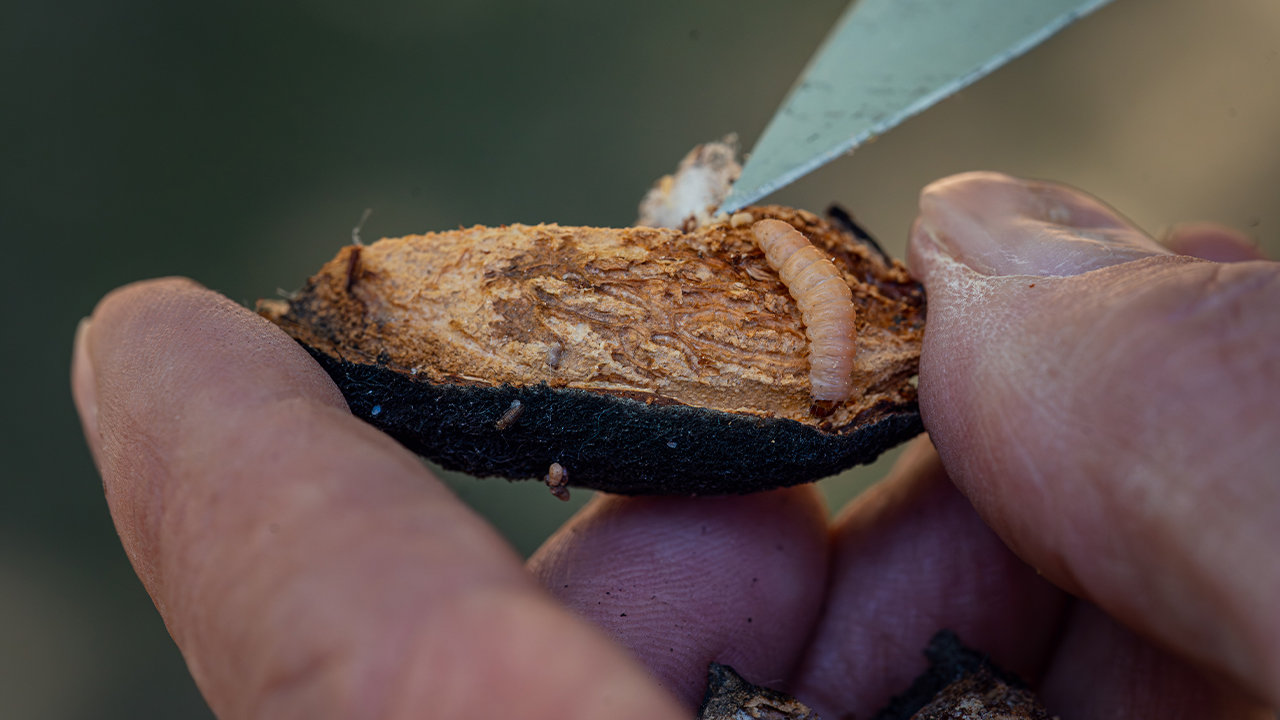Whether for economic reasons or because of the inability to access orchards because of the weather last winter, inadequate winter sanitation efforts are becoming increasingly evident. Industry reports confirm high damage numbers in last season’s crop and navel orangeworm is likely the main culprit. To combat this issue, experts are advocating for a comprehensive Integrated Pest Management (IPM) plan that begins with good winter sanitation, but labor and inputs are costly. In the current economic climate, where every dollar spent requires meticulous scrutiny, understanding the economic impact of NOW is of paramount importance.

Analyzing the Economic Impact
Brittany Goodrich, assistant cooperative extension specialist at UC Davis, emphasizes the need for a closer examination of expenditures on pest management practices. In a collaborative effort, Goodrich and her team at UC Davis conducted an in-depth analysis to quantify the economic impact of NOW on growers. Their study involved assessing 53 conventional chemical pesticide products and seven mating disruption products, considering the number of applications and associated costs.
The research revealed that, on average statewide, 1.4 pesticide applications are applied per acre to control NOW. However, this figure exhibits significant variability based on geographic location. For instance, in Placer County with fewer almond orchards, the application rate was a mere 0.2 per acre. In contrast, Fresno County, with a more extensive almond presence, saw an average of 2.0 applications per acre.
In terms of costs, the statewide average amounted to $99 per acre, encompassing both application costs and mating disruption costs when applicable. Again, the costs varied by county, with Placer County totaling $8 per acre and Fresno County reaching $146 per acre, on average.
NOW IPM Program Comparison Decision Tool
This past harvest is proof that there is an obvious need for more resources to help growers assess the economic impact of various IPM practices, which is why UC Davis is piloting the NOW IPM Program Comparison Decision Tool. This innovative tool empowers grower to input combinations of different IPM programs, allowing them to determine the most effective strategy for their specific operation.
Using the decision tool, Goodrich presented a case study comparing Program 1, involving winter sanitation, spring pesticide application, and hull split pesticide application, with Program 2, consisting of winter sanitation, mating disruption, and hull split pesticide application. The tool revealed that while reject percentages were identical between the two programs, Program 2 resulted in less price loss, about $35 per acre.
Beyond comparing programs, the tool provides valuable insights into a farmer's breakeven point, considering factors such as damage percentages, input costs and market prices for almonds. Goodrich emphasizes the significance of considering more expensive pest management methods like mating disruption, stating that the initial costs may be outweighed by lower damage rates, making it a net benefit for growers.
As the agricultural industry navigates the challenges posed by NOW infestations, understanding the economic impact is crucial. In these times of economic uncertainty, the tool from UC Davis can enable growers to make informed decisions that balance costs, damage rates and overall profitability. Learn more about the economics of NOW control by watching the session from the IPM + NOW Summit last year and the NOW session from The Almond Conference 2023.
